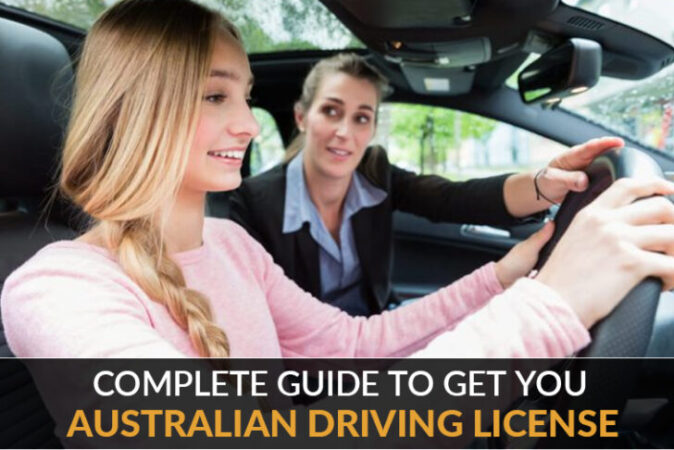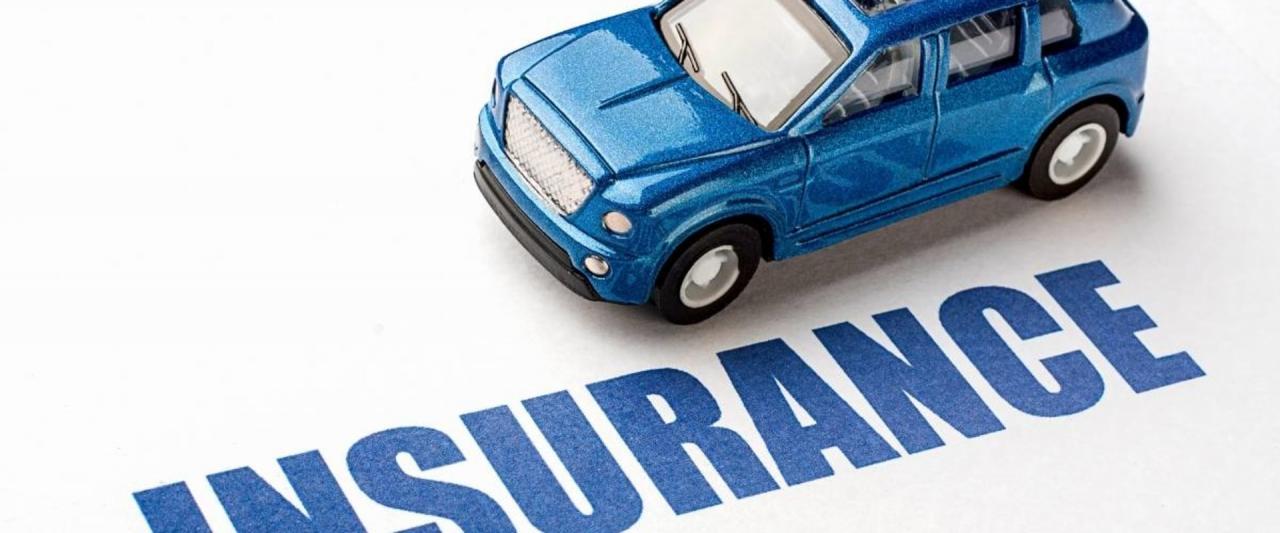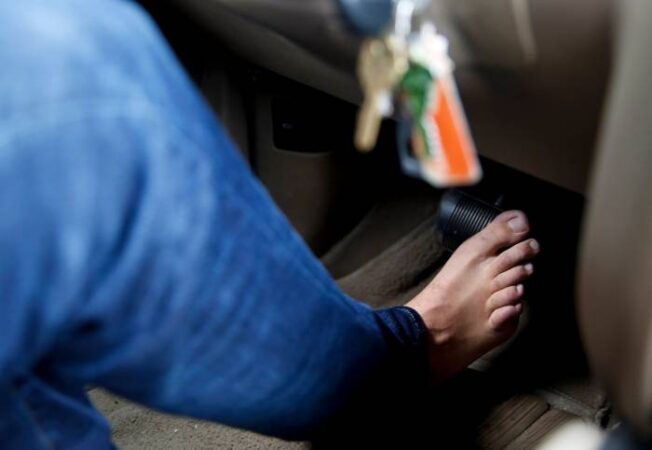
Do I need car insurance to drive in Australia? The answer is a resounding yes. Driving without insurance in Australia is not only illegal but also carries hefty penalties. This guide will explore the legal requirements, different types of insurance, factors affecting costs, and how to make a claim. We’ll also delve into the serious consequences of driving without insurance, ensuring you understand the importance of having adequate coverage on the road.
Australia has a comprehensive system of car insurance regulations to protect drivers, passengers, and pedestrians. Understanding these regulations is crucial for anyone who drives in Australia. This guide will equip you with the knowledge to navigate the intricacies of car insurance, making your driving experience safer and more secure.
Legal Requirements
In Australia, it is mandatory to have car insurance if you drive a vehicle on public roads. This legal requirement aims to protect both you and others in the event of an accident.
Penalties for Driving Without Insurance
Driving without car insurance in Australia is a serious offense. The penalties can be severe, including fines, suspension of your driver’s license, and even imprisonment.
The specific penalties vary depending on the state or territory where you are driving. However, they generally include:
- Fines: These can range from hundreds to thousands of dollars, depending on the severity of the offense and the state or territory. For example, in New South Wales, the fine for driving without insurance can be up to $5,500.
- Suspension of driver’s license: Your license may be suspended for a period of time, which could range from a few weeks to several months. This can significantly impact your ability to drive and commute.
- Imprisonment: In some cases, driving without insurance can lead to imprisonment, especially if it is a repeat offense or if the driver has been involved in an accident.
It is crucial to remember that even if you are not caught driving without insurance, you could face significant financial consequences if you are involved in an accident. You could be liable for the costs of damage to other vehicles, injuries, and legal fees.
The Role of the Australian Government in Regulating Car Insurance
The Australian government plays a crucial role in regulating car insurance. It sets minimum standards for insurance policies and ensures that insurers operate fairly and responsibly.
The Australian Prudential Regulation Authority (APRA) is responsible for regulating the financial services industry, including car insurance companies. APRA sets standards for insurers, such as capital adequacy requirements and solvency testing, to ensure they can meet their financial obligations.
The Australian Competition and Consumer Commission (ACCC) is responsible for protecting consumers from unfair or misleading conduct by insurers. It investigates complaints about insurance companies and can take action against them if they are found to be breaching consumer laws.
Types of Car Insurance

In Australia, there are various types of car insurance available to suit different needs and budgets. Understanding the different types of coverage and their benefits and drawbacks can help you make an informed decision when choosing car insurance.
Types of Car Insurance
There are three main types of car insurance available in Australia:
- Comprehensive Car Insurance: This type of insurance provides the most comprehensive coverage, protecting you against a wide range of risks, including damage to your car due to accidents, theft, fire, natural disasters, and vandalism. It also covers third-party liability, meaning it protects you financially if you cause damage to another person’s property or injure someone in an accident.
- Third Party Property Damage (TPPD) Insurance: This type of insurance provides coverage for damage you cause to another person’s property, but it does not cover damage to your own car. It is the minimum level of car insurance required by law in Australia.
- Third Party Fire and Theft (TPFT) Insurance: This type of insurance offers coverage for damage you cause to another person’s property, as well as damage to your own car caused by fire or theft. It provides more protection than TPPD but less than comprehensive insurance.
Comparison of Coverage
The following table summarizes the coverage offered by each type of car insurance:
| Type of Insurance | Damage to Your Car | Third-Party Property Damage | Third-Party Injury | Other Coverage |
|---|---|---|---|---|
| Comprehensive | Yes | Yes | Yes | Fire, theft, natural disasters, vandalism |
| TPPD | No | Yes | Yes | None |
| TPFT | Yes (fire & theft only) | Yes | Yes | None |
Benefits and Drawbacks
- Comprehensive Car Insurance:
- Benefits: Provides the most comprehensive coverage, offering peace of mind in case of accidents, theft, or other incidents. It also includes third-party liability, protecting you financially if you cause damage to another person’s property or injure someone.
- Drawbacks: Generally, the most expensive type of car insurance due to its wide range of coverage.
- Third Party Property Damage (TPPD) Insurance:
- Benefits: The most affordable type of car insurance, meeting the legal minimum requirements in Australia. It protects you financially if you cause damage to another person’s property.
- Drawbacks: Offers limited coverage, only protecting you against third-party property damage. It does not cover damage to your own car, leaving you responsible for repair costs in case of an accident.
- Third Party Fire and Theft (TPFT) Insurance:
- Benefits: Offers more protection than TPPD by covering damage to your own car caused by fire or theft. It is a good option for those who want some coverage for their car but don’t want the expense of comprehensive insurance.
- Drawbacks: Does not cover all types of damage to your car, leaving you responsible for repair costs in case of an accident other than fire or theft. It can be more expensive than TPPD but less expensive than comprehensive insurance.
Factors Affecting Insurance Costs
Car insurance premiums are not fixed. They vary based on several factors that insurance companies consider to assess the risk of insuring you. These factors are designed to ensure that you pay a premium that reflects the likelihood of you making a claim.
Age
Your age plays a significant role in determining your car insurance premium. Younger drivers, especially those under 25, are statistically more likely to be involved in accidents due to factors like inexperience and risk-taking behaviour. This higher risk translates to higher premiums for young drivers. Conversely, older drivers, often with years of experience and a safer driving record, tend to have lower premiums.
Driving History
Your driving history is a critical factor in determining your insurance premium. A clean driving record with no accidents or traffic violations will generally lead to lower premiums. Conversely, a history of accidents, speeding tickets, or other driving offenses will increase your premiums. Insurance companies use this information to assess your risk of being involved in future accidents.
Car Model
The make, model, and year of your car also influence your insurance premium. Some car models are considered safer and more reliable than others, resulting in lower premiums. High-performance cars, for example, are often associated with a higher risk of accidents and are therefore more expensive to insure.
Location
Your location plays a role in determining your insurance premiums. Urban areas with high traffic density and higher rates of accidents typically have higher insurance premiums than rural areas. This is because the likelihood of an accident is higher in congested urban areas.
Driving Habits, Do i need car insurance to drive in australia
Your driving habits also affect your insurance premiums. If you drive frequently, for long distances, or in high-risk areas, your premiums will be higher. Conversely, if you drive infrequently, for short distances, and in safe areas, your premiums will be lower.
Choosing the Right Insurance

Navigating the world of car insurance in Australia can feel overwhelming, with numerous providers offering a wide range of policies. Finding the right insurance involves understanding your needs and comparing options to get the best coverage at a reasonable price.
Factors to Consider
Before diving into the details of specific policies, it’s essential to consider several key factors that influence your insurance needs. These factors help you narrow down your search and make informed decisions.
- Your Driving History: Your driving record plays a significant role in determining your insurance premiums. A clean driving history with no accidents or traffic violations will likely result in lower premiums compared to someone with a history of claims or offenses.
- Your Vehicle: The type, age, and value of your vehicle are crucial factors. Newer, high-performance cars are generally more expensive to insure than older, standard models.
- Your Location: The location where you reside can impact your insurance premiums. Areas with higher crime rates or more traffic congestion may have higher insurance costs.
- Your Usage: The frequency and purpose of your driving also affect your premiums. If you drive frequently for work or long distances, your insurance costs might be higher than someone who drives less often for personal use.
- Your Coverage Needs: Consider the level of coverage you require based on your personal circumstances. If you have a new car or a substantial loan, comprehensive coverage might be more suitable. However, if you have an older car and limited financial resources, third-party insurance might suffice.
Comparing Insurance Policies
Once you’ve considered the key factors, it’s time to start comparing insurance policies from different providers. This involves gathering information on various aspects of each policy.
- Premiums: This is the most obvious factor to consider. Compare the premiums from different providers and ensure you understand the coverage included in each quote.
- Excess: This is the amount you’ll have to pay out of pocket in case of an accident before your insurance covers the remaining costs. Lower excesses typically result in higher premiums, and vice versa.
- Coverage: Compare the different coverage options offered by each policy. Some policies may include comprehensive coverage, which covers damage to your vehicle, while others may only offer third-party insurance, which covers damage to other vehicles or property.
- Benefits: Look for additional benefits offered by different providers, such as roadside assistance, rental car coverage, or accident forgiveness. These features can provide valuable support in case of an accident.
- Customer Service: Consider the reputation of the insurance provider and their customer service record. Look for companies with a history of positive reviews and a commitment to providing excellent support.
Tips for Finding the Best Coverage
Several strategies can help you find the best car insurance coverage at a reasonable price.
- Use Comparison Websites: Online comparison websites allow you to quickly and easily compare quotes from multiple insurance providers. This can save you time and effort in researching individual providers.
- Consider Discounts: Many insurance providers offer discounts for various factors, such as safe driving records, anti-theft devices, or membership in certain organizations. Inquire about these discounts to see if you qualify.
- Shop Around: Don’t settle for the first quote you receive. Get quotes from several providers to compare prices and coverage options.
- Negotiate: Once you’ve found a policy you like, don’t hesitate to negotiate with the provider. You may be able to secure a better price or additional benefits by explaining your needs and preferences.
- Read the Fine Print: Carefully review the policy documents before signing up. Understand the terms and conditions, exclusions, and limitations of the coverage.
Making a Claim

Making a claim with your car insurance is a straightforward process. If you’re involved in an accident, it’s crucial to stay calm and prioritize safety. Once you’re safe, you can contact your insurance company and follow their instructions for filing a claim.
Claim Process
You’ll need to report the accident to your insurer as soon as possible. They will provide you with a claim form and instructions on how to proceed. This usually involves providing details about the accident, including the date, time, location, and parties involved.
Required Documentation
To ensure a smooth claim process, you’ll need to gather some important documents:
- Your insurance policy details
- Your driver’s license and registration
- Police report (if applicable)
- Photos and videos of the accident scene and damaged vehicles
- Witness statements (if available)
- Medical reports (if applicable)
- Repair quotes from a reputable mechanic
Types of Claims
The type of claim you make will determine the processing time. Here are some common types of car insurance claims:
- Third-party claims: These claims involve damage to another person’s property or injuries sustained by another person due to your negligence. The processing time for these claims typically takes a few weeks, depending on the complexity of the case.
- Own damage claims: These claims involve damage to your own vehicle. Processing times for these claims can range from a few days to several weeks, depending on the extent of the damage and the availability of parts.
- Third-party property damage claims: These claims involve damage to another person’s property, such as a fence or building, caused by your vehicle. Processing times are similar to third-party claims, typically taking a few weeks.
Driving Without Insurance
Driving without car insurance in Australia is illegal and carries serious consequences. It’s crucial to understand the risks involved and ensure you have adequate coverage to protect yourself and others on the road.
Penalties for Driving Without Insurance
The penalties for driving without insurance can be substantial and include fines, license suspension, and even imprisonment. The specific penalties vary depending on the state or territory and the circumstances of the offense.
Here’s a table outlining the potential penalties:
| State/Territory | Fine | License Suspension | Other Penalties |
|---|---|---|---|
| New South Wales | $550 | 6 months | Vehicle impoundment |
| Victoria | $1,652 | 3 months | Vehicle impoundment |
| Queensland | $1,378 | 3 months | Vehicle impoundment |
| South Australia | $1,050 | 3 months | Vehicle impoundment |
| Western Australia | $1,000 | 3 months | Vehicle impoundment |
| Tasmania | $1,050 | 3 months | Vehicle impoundment |
| Northern Territory | $1,000 | 3 months | Vehicle impoundment |
| Australian Capital Territory | $1,100 | 3 months | Vehicle impoundment |
Real-Life Consequences
Driving without insurance can have devastating consequences. Consider these examples:
* A driver in New South Wales was involved in a minor accident. While no one was injured, the driver was found to be uninsured. They were fined $550, had their license suspended for 6 months, and their vehicle was impounded. This incident resulted in significant financial and personal hardship.
* In Victoria, a driver was involved in a serious accident that resulted in injuries to another person. The driver was uninsured and faced substantial legal fees, medical expenses, and potential jail time. The victim also incurred significant medical costs and faced ongoing difficulties due to their injuries.
These examples demonstrate the severe repercussions of driving without insurance in Australia. It’s essential to prioritize your safety and financial well-being by obtaining adequate insurance coverage.
Final Conclusion: Do I Need Car Insurance To Drive In Australia
Driving without insurance in Australia is a risky gamble, one that could lead to significant financial burdens and legal ramifications. By understanding the legal requirements, exploring the different types of insurance available, and making informed decisions about your coverage, you can ensure you’re driving legally and safely. Remember, having car insurance provides peace of mind, knowing you’re protected in the event of an accident.
FAQ Resource
What happens if I’m involved in an accident without insurance?
You could face significant financial consequences, including covering all repair costs and potential legal fees. You might also face a suspension of your driver’s license and a hefty fine.
Can I get car insurance even if I have a poor driving history?
Yes, but you may have to pay higher premiums. It’s important to be upfront about your driving history when applying for insurance.
What’s the difference between third-party and comprehensive insurance?
Third-party insurance covers damage to other vehicles or property, while comprehensive insurance also covers damage to your own vehicle.
How often should I review my car insurance policy?
It’s recommended to review your policy annually, as your needs and driving circumstances may change. This ensures you have the right coverage at the best price.




